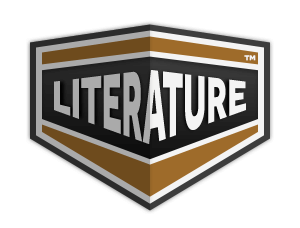The natives of British Central Africa
- 47 Downloads
the damp crevices of rocks, and beside the streams. The asparagus and parsley ferns, and a beautiful kind of large hart’s-tongue, with the tip of the frond cleft in two, are among the more noticeable forms. Though, as we have seen, there are no forests on a large scale, a fair number of fine timber-trees are to be found. There is the mbawa, a kind of mahogany, and the mpingo, or ebony, both of large size and handsome growth, and the Mlanje cedar (really a Widdringtonia), the only indigenous conifer, and growing nowhere but on that mountain. Its wood is pale red, smooth, and deliciously scented. Most of the native wood which can be used at all is hard and heavy, and somewhat difficult to work; but the result, especially in the case of the cedar, is worth the trouble. Another useful timber-tree, whose wood is never attacked by the destructive borer-beetle, is the msuku (Napaca Kirkii), only found at a height of over two thousand feet, and very common on the hills about Blantyre. It bears the favourite wild fruit of the natives, consisting of a skin and a quantity of large seeds, with a little sweet pulp, and a moderate allowance of juice; what there is of it is so good that it would be well worth cultivation. Other wild fruits are not so attractive to the European palate. There is one about the size of an orange, with a hard shell, and seeds embedded in a juicy pulp, slightly bitter, slightly acid, and slightly sweet, and at the same time not unpleasant in flavour. I believe the tree is a kind of Strychnos, consequently one would expect the fruit to be poisonous, yet native children eat any quantity, and seem none the worse. The myombo, with leaves like our ash, is a very common tree, and the one from which bark-cloth is usually obtained. The bark of the wild fig is used for the same purpose. The thorn-trees—acacias and mimosas—are among the most characteristic plants of the country, and some of them have very handsome flowers. The mlungusi, which has particularly vicious, hooked thorns, is sometimes planted in hedges. Another tree which makes a very effectual hedge is the cactus euphorbia. Of the same family (Spurges) are the weird candelabrum euphorbia, growing in the hills, and a leafless, fleshy, pale-green kind, often found in the villages, whose acrid, milky juice is used for stupefying fish. There is no season of the year quite without flowers, and no place in which some kind or other is not to be found; but, of course, the best time is the first few weeks of the rains. It would be hopeless to attempt a description, or even a mere enumeration, of the lovely and wonderful forms to be found side by side with familiar home growths, such as buttercups, penny-royal, and self-heal. Some slight idea of what is to be seen in the Shiré Highlands, and especially on Mlanje, where you pass from tropical to temperate, and even to Alpine, vegetation, may be gathered from the botanical chapter in Sir H. H. Johnston’s _British
Translation
Translate and read this book in other languages:
Select another language:
- - Select -
- 简体中文 (Chinese - Simplified)
- 繁體中文 (Chinese - Traditional)
- Español (Spanish)
- Esperanto (Esperanto)
- 日本語 (Japanese)
- Português (Portuguese)
- Deutsch (German)
- العربية (Arabic)
- Français (French)
- Русский (Russian)
- ಕನ್ನಡ (Kannada)
- 한국어 (Korean)
- עברית (Hebrew)
- Gaeilge (Irish)
- Українська (Ukrainian)
- اردو (Urdu)
- Magyar (Hungarian)
- मानक हिन्दी (Hindi)
- Indonesia (Indonesian)
- Italiano (Italian)
- தமிழ் (Tamil)
- Türkçe (Turkish)
- తెలుగు (Telugu)
- ภาษาไทย (Thai)
- Tiếng Việt (Vietnamese)
- Čeština (Czech)
- Polski (Polish)
- Bahasa Indonesia (Indonesian)
- Românește (Romanian)
- Nederlands (Dutch)
- Ελληνικά (Greek)
- Latinum (Latin)
- Svenska (Swedish)
- Dansk (Danish)
- Suomi (Finnish)
- فارسی (Persian)
- ייִדיש (Yiddish)
- հայերեն (Armenian)
- Norsk (Norwegian)
- English (English)
Citation
Use the citation below to add this book to your bibliography:
Style:MLAChicagoAPA
"The natives of British Central Africa Books." Literature.com. STANDS4 LLC, 2024. Web. 23 Oct. 2024. <https://www.literature.com/book/the_natives_of_british_central_africa_71018>.

